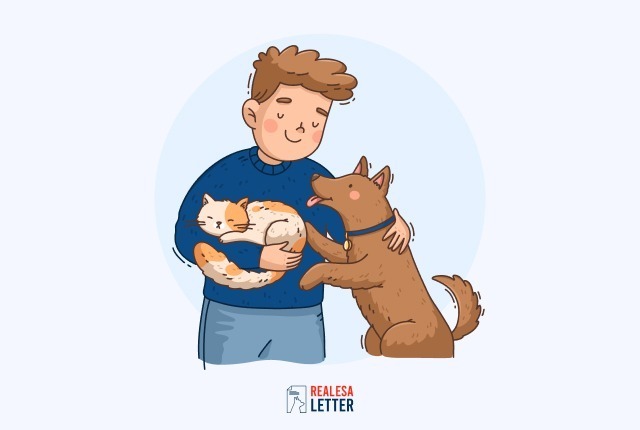If you have an emotional support animal or are considering getting one, you might wonder ‘how many ESAs can you have?’
The answer isn’t as simple as a single number. It depends on your needs, the rules where you live, and the evidence you can provide.
This guide covers the basics of emotional support animals. You’ll learn how many ESAs you can have, what federal law says, and how HUD regulates them. It also explains the steps to take if you need more than one ESA.
Can You Have More Than One Emotional Support Animal?
The short answer is yes, you can have more than one ESA as long as your need is legitimate and supported by a licensed mental health professional. There’s no strict federal limit on the number of ESAs a person can have. However, the number of ESAs must be reasonable and directly tied to your treatment plan.
For example, someone may benefit from a dog as ESA for companionship and a cat for anxiety relief. Another person may need more than one ESA if different animals provide different kinds of emotional support.
That said, local or state ESA laws and housing rules can sometimes impose restrictions. This is why having a letter from a licensed professional is so important when making a request for multiple ESAs.
What Federal Law Says About Multiple Emotional Support Animals
Under federal law, emotional support animals are not considered service animals. A service dog is trained to perform specific tasks for a person with a disability, while an ESA provides comfort and support simply by being present.
When it comes to multiple emotional support animals, the Department of Housing and Urban Development provides clear protections under the Fair Housing Act. According to HUD:
- Landlords must make reasonable accommodations for tenants with ESAs and cannot deny an ESA, including cases where more than one ESA is needed.
- There is no set limit on the number of ESAs a person can have under federal law.
- Each ESA must be directly connected to the individual’s mental health needs and supported by documentation.
As long as your licensed mental health professional explains that having multiple emotional support animals is part of your treatment plan, you are legally protected. Landlords must then consider your request, provided it is reasonable and does not conflict with state or local laws.
How the Department of Housing Handles ESA Requests
When you submit a request for multiple ESAs, landlords often require proper documentation. This usually comes in the form of ESA letters written by a licensed mental health professional.
The department of housing looks at:
- Validity of the ESA letter – Is it from a verified professional?
- Reasonableness of the request – Is the number of ESAs appropriate for your living space?
- Support animal as long as needs are clear – Landlords can’t deny your ESA unless it poses a safety risk or creates an undue financial burden.
For example, requesting five large dogs in a small apartment might be unreasonable. But having a service dog along with one or two emotional support animals could be seen as valid.
How Do You Qualify for More Than One ESA?
Generally, you qualify for an ESA if you have a documented mental or emotional disability and a healthcare professional determines the animal alleviates related symptoms.
Here’s what typically determines eligibility:
- Documented Mental Health Condition – You must have a condition such as anxiety, depression, PTSD, or another recognized mental disorder where ESAs can help.
- Treatment Plan Justification – Your provider needs to explain how multiple emotional support animals play a role in your care. For example, one ESA may provide comfort during anxiety attacks, while another may help you cope with loneliness.
- Reasonableness of Request – The Department of Housing and Housing and Urban Development (HUD) require that the number of ESAs requested is reasonable and manageable within your living situation.
So, if your therapist believes that having two animals — say, a cat and a dog — supports your treatment plan, you can qualify for both under federal law.
Do I Need a Separate ESA Letter for Each Emotional Support Animal?
This is a very common question. The answer is: not always.
A single ESA letter from a licensed mental health professional can cover multiple ESAs as long as it clearly lists each animal and explains why each is needed.
In some cases, landlords may request separate letters if you are making a request for multiple ESAs. For example, if you have three animals, they may want to see documentation that supports the number of animals.
To avoid issues, it’s best to have your provider include all your emotional support animals in one letter with specific details. That way, your housing provider sees that the recommendation comes from a legitimate source and aligns with your treatment plan.
How Can I Get an ESA Letter for More Than One Emotional Support Animal?
Getting an ESA letter for more than one ESA is straightforward, especially if you use a trusted provider like RealESALetter.
Here’s how the process works step-by-step:
- Start with an Online Assessment – Visit the RealESALetter website and take a short questionnaire about your mental health and living situation.
- Connect with a Licensed Mental Health Professional – Your responses are reviewed by a licensed professional who can legally recommend emotional support animals.
- Discuss Multiple ESAs – If you need more than one ESA, explain why. For example, you might say: “My service dog helps with panic attacks, but my cat helps with loneliness and sleep issues.”
- Receive a Letter from a Licensed Professional – Once approved, you’ll get a legitimate ESA letter that lists multiple emotional support animals if necessary. This letter can be used for your housing provider under Housing and Urban Development guidelines.
- Submit to Your Landlord – Present the ESA letter when making your request for multiple ESAs. Under federal law, they must consider your request as long as it’s reasonable and doesn’t violate state or local laws.
Pro Tip: RealESALetter also makes ESA letter renewals easy. Since ESA letters typically need to be updated annually, you can quickly renew online and even review a sample ESA letter to see what your documentation should look like.
In Conclusion,
The number of emotional support animals you can have depends on your individual needs, proper documentation, and compliance with laws. There’s no strict federal limit on the number of ESAs, but each animal must be justified and part of your treatment plan.
If you’re considering adding one or more emotional support animals to your care plan, getting the proper letter is the most important step.
Ready to take the next step? RealESALetter makes the process simple, fast, and fully compliant with HUD guidelines. You’ll connect with a licensed professional, receive a valid ESA letter, and even have access to a sample ESA letter for clarity.
Start your assessment with RealESALetter today and secure the housing rights your emotional support animals deserve.
Pricing
PSD Letter
Reviews
ESA By States
ESA Laws
Resources




